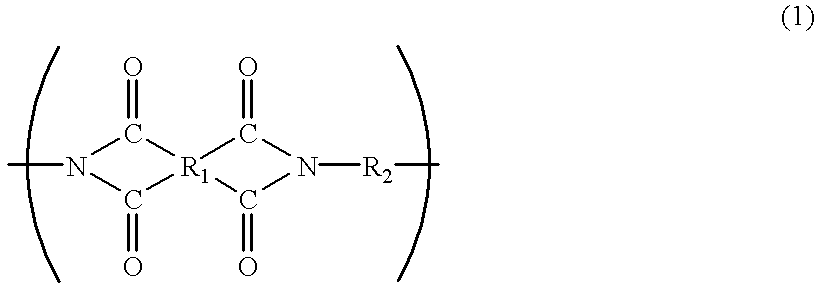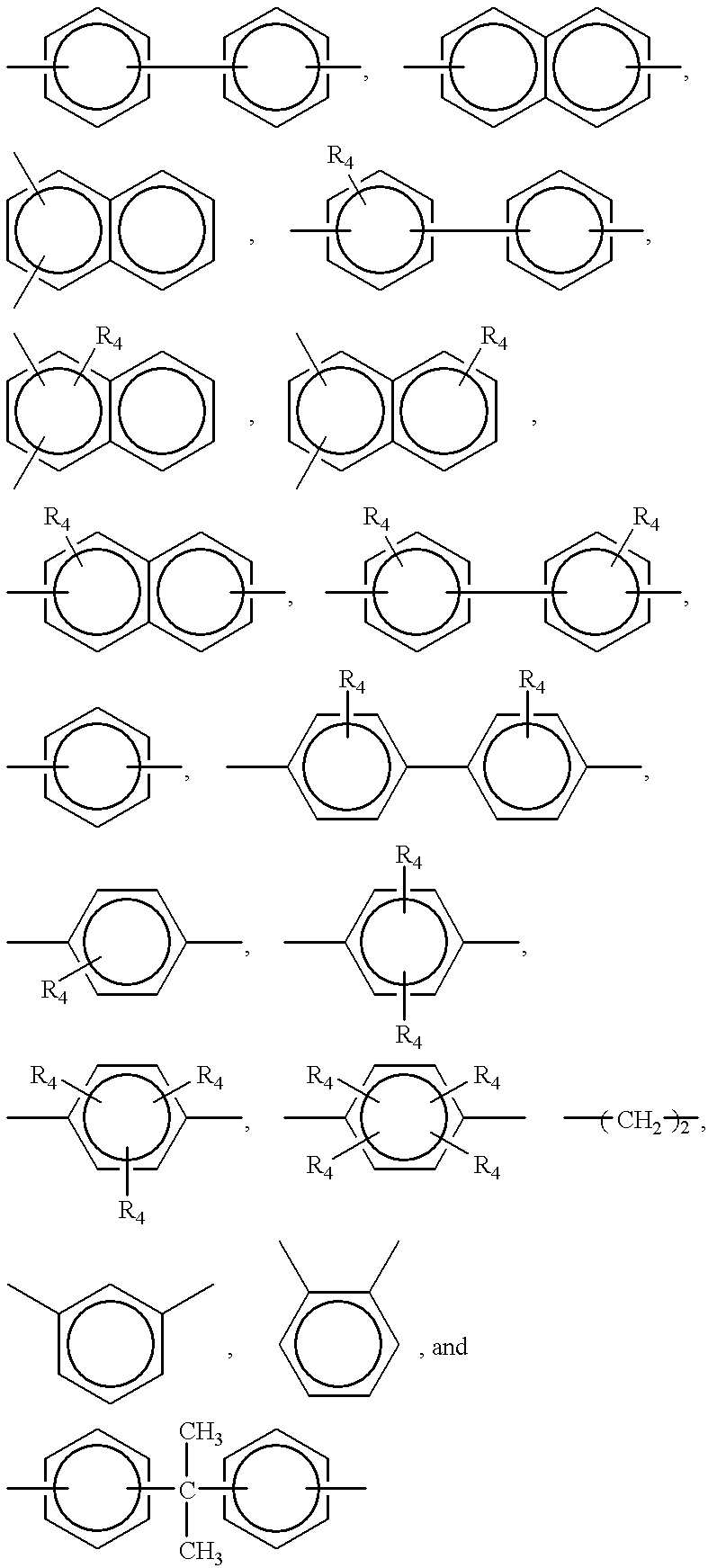Method for producing polyimide film
a polyimide film and film technology, applied in the direction of filament/thread forming, other domestic articles, coatings, etc., can solve the problems of unstable after-treatment, increased cost, and difficulty in stably providing a film with an improved adhesive strength by a prior art method, so as to overcome uneven adhesive quality and high value of the adhesive strength of the composite film
- Summary
- Abstract
- Description
- Claims
- Application Information
AI Technical Summary
Benefits of technology
Problems solved by technology
Method used
Image
Examples
examples 1
The imidation rate and the amount of volatile constituent of a prefilm, and the adhesive strength of a finished product were measured. The heating temperature and time at the stage of chemical curing varied while conditions at the stage of heat-curing were constant.
Polyamide acid solution was prepared from 4,4'-diaminodiphenylether selected from aromatic diamines and pyromellitic acid dianhydride selected from aromatic tetracarboxylic dianhydrides. Acetic anhydride and isoquinoline were mixed quickly with the solution. The molar rate of the acetic anhydride to a repeating unit of the polyamide acid was 5.5 to 1, and the molar ratio of the isoquinoline to a repeating unit of the polyamide acid was 0.55 to 1. Then the mixture was formed into a film-shaped composition on the aluminum foil with the thickness of 30 .mu.m. Each film-shaped composition was heated for 30 to 360 seconds at the temperature ranging from 90 to 160.degree. C. in an oven under the 12 different conditions, and pre...
examples 13
Polyamide acid solution was obtained from 4,4'-diaminodiphenylether and para-phenylenediamine selected from aromatic diamines in the molar rate of 3:1 and pyromellitic acid dianhydride selected from aromatic tetracarboxylic dianhydrides. Acetic anhydride and isoquinoline were added to the solution. The molar rate of the acetic anhydride to a repeating unit of the polyamide acid was 5.0 to 1, and the molar rate of the isoquinoline to a repeating unit of the polyamide acid was 0.51 to 1. Then the mixture was stirred sufficiently and adjusted to 0.degree. C. to make dope.
The so obtained dope was allowed to flow from a T-die and formed into a film-shaped composition with the thickness of about 250 .mu.m on the smooth metal endless belt consecutively. Then it was dried up by hot air while the belt was rotated. The amount of volatile constituent of three prefilms, each of which was prepared under the conditions that the temperature of the belt chamber was set at 85.degree. C. / 95.degree. C...
examples 16
Next, polyimide films were produced under the various conditions of maximum temperature in the heat-curing treatment process in a tenter chamber, while the condition of chemical curing remained constant.
Polyamide acid solution was prepared from 4,4'-diaminodiphenylether selected from aromatic diamines and pyromellitic acid dianhydride selected from aromatic tetracarboxylic dianhydrides. Acetic anhydride and isoquinoline were mixed quickly with the solution. The molar ratio of the acetic anhydride to a repeating unit of the polyamide acid was 5.5 to 1, and the molar ratio of the isoquinoline to a repeating unit of the polyamide acid was 0.55 to 1. Then the mixture was formed into a film-shaped composition. After that, the film-shaped composition was heat-treated at the temperature of 120.degree. C. for 100 seconds to obtain a prefilm. Then the prefilm was treated at 270.degree. C. for 30 seconds and at 370.degree. C. for 30 seconds (the temperature was gradually raised). The resultin...
PUM
| Property | Measurement | Unit |
|---|---|---|
| Fraction | aaaaa | aaaaa |
| Percent by mass | aaaaa | aaaaa |
| Angle | aaaaa | aaaaa |
Abstract
Description
Claims
Application Information
 Login to View More
Login to View More - R&D
- Intellectual Property
- Life Sciences
- Materials
- Tech Scout
- Unparalleled Data Quality
- Higher Quality Content
- 60% Fewer Hallucinations
Browse by: Latest US Patents, China's latest patents, Technical Efficacy Thesaurus, Application Domain, Technology Topic, Popular Technical Reports.
© 2025 PatSnap. All rights reserved.Legal|Privacy policy|Modern Slavery Act Transparency Statement|Sitemap|About US| Contact US: help@patsnap.com



